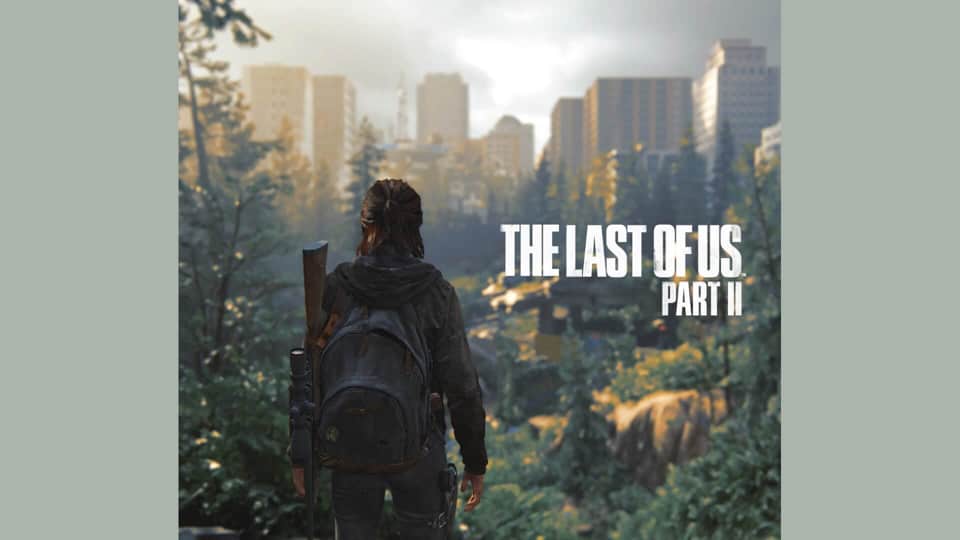It’s not an overstatement to say that The Last of Us Part II is probably the most anticipated game for PlayStation fans. Developed by Naughty Dog (Uncharted, The Last of Us), the game continues the story of Ellie and Joel from the first game, now jumping forward about 4 years into the future.
Since the game has now been out for a week now, I will be talking about spoilers here. This review will primarily focus on story, combat, traversal, graphics, and soundtrack. The game was played on a PlayStation 4 Slim, with no provision for a review code.
The first Last of Us was a technical and narrative masterpiece. Coming at the tail end of the PS3’s era, it managed to extract all the power of that console and wrapped it in satisfying gameplay and an emotionally invested story. It’s the same story with The Last of Us Part II this time, which is coming right at the end of the PS4’s life cycle. The game pushes all boundaries when it comes to technicalities here, setting a perfect example of the PS4’s hardware. With its story, Naughty Dog has taken some bold risks, and in my opinion, it was for the better. While there are a few hiccups along the way in the narrative, ultimately The Last of Us Part II manages to create its own identity.
Story: Something Old, Something New
The Last of Us Part II follows a fairly linear story, along with some brief flashbacks. However, the structure does take an unexpected turn about halfway through the game, which has proved to be quite controversial. But let’s get back to the beginning. Having now settled in Jackson, Wyoming, Ellie and Joel have finally settled into a more-or-less ‘normal’ life. However, not everything is as safe as it seems, and Ellie witnesses a horrific tragedy – the death of Joel. This sets her on a path of vengeance, which takes her to Seattle, which is where the majority of the game takes place.
By the end of the first couple of hours, you will have played 3 different characters – Joel, Ellie, and Abby – our primary characters of the story. Having played the first game, I was taken aback by Joel’s sudden (and gruesome) demise so early on in the game, but there are narrative reasons for it. As players of the first game will remember, Joel, rescues Ellie from the Fireflies in its climax. During that escape, Joel commits a number of murders in cold blood, particularly one of the doctors. We learn halfway through the game that said the doctor was Abby’s father, which set her on her own path of vengeance.
Now, while all that sounds great on paper, I do have some small issues when it comes to execution in gameplay and structure. At its midpoint, the game does a switcheroo, dialling the clocks. Now, you experience all the events up until that point as Abby, something which was not mentioned anywhere in the marketing. This follows in the footsteps of games like Metal Gear Solid 2 and Halo 2 where a character switch was hidden by marketing for a more profound emotional impact.
The game is overly long and does tend to overstay its welcome towards the second half. Was the role reversal actually needed? Yes, I think so. Should it have been for as long as it is? Nope. And there are moments where you’d think the game is going to end, but it keeps going. The end though, at least for me, is quite hard-hitting. A lot of players will probably not agree with where our characters end up, but I applaud Neil Druckmann and the other writers for not pandering to their fans. Whatever happens in the story is quite reflective of the game’s world.
Combat and Traversal: More of The Same, But That’s Not Bad

The Last of Us Part II expands upon the combat from the first game – which was primarily stealth-based. You’ll still be collecting supplies while awkwardly crouched in spooky areas, upgrading weapons, and health kits. You’ll be creeping up on clickers and humans alike in the same ways as last time. However, it’s the level design here that needs to be applauded. That has always been Naughty Dog’s strong suit and something that needs to be appreciated more.
The first game was extremely linear with few moments of exploration. It followed the “invisible corridor” method, and that’s not necessarily a bad thing. This time though, Naughty Dog has vastly expanded upon the areas that you can explore. At times it almost feels like an open-world game, and there are plenty of completely optional areas for you to explore. Horse-riding is also back, so that’s neat.
Considering just how realistic the game is in terms of visuals, it’s quite maddening that the combat doesn’t completely fall apart when you think of doing something stupid. All the new animations do tend to get in the way sometimes, but when you’re staring at Ellie choking the life out of another human being, maybe you’ll stop thinking about this as purely a videogame. Weapons also feel much better to use thanks to excellent sound design, although I would have appreciated some more variety in types of weapons. There is a slight variation that comes in the 2nd half of the game, but the core gameplay remains the same.
So what else about traversal is new? Well, you can use ropes to ascend/descend to other levels of elevation. We also get a dedicated jump button, which is crucial considering the more open nature of the game this time around. With that said there are still “invisible walls” around. It still is a linear game, but the excellent level design makes it feel less cramped. Naughty Dog has time and again proved just how adept they are at using basic game mechanics to inform the player of where to go. Carefully designed light casts, use of colour, enemy spawn locations, camera shifts, and NPC dialogue will make sure you’re not too lost.
Graphics and Soundtrack
Okay, we all know Naughty Dog games look great. This one isn’t an exception. However, I still can’t believe this game can and does run on 7-year-old PS4 hardware. While I can only sing praises for the visuals in the most non-technical way, do check out Digital Foundry’s analysis of the same.
The game runs at 30 FPS on both PS4 and PS4 Pro, but I don’t mind the lower framerate as long as it’s done well. Like Marvel’s Spider-Man before it, The Last of Us Part 2 delivers excellent frame pacing by good use of motion blur and other in-camera effects.
And then there’s the music, and as you’d expect, Gustavo Santaolalla is a master at work here. The soundtrack of 2013’s The Last of Us was phenomenal, and Part II doesn’t disappoint either. There are clever tracks here that play off of those from the first game but elicit a different feeling. Take for example “Longing” from Part 2, which is a little familiar to those who were a fan of “The Choice” in the first game.
The Last of Us Part II explores violence as one of its main subjects, and the music here is a haunting reminder of what comes out of it. The franchise is well known for excellent character moments, & Santaolalla knows it. Whether it be Ellie’s confused feelings towards those she loves, or Abby’s painful past & what it has grown into now, you bet there’s a track for everything.
Verdict
The Last of Us Part 2 is a bold sequel that takes everything that fans love from the first game and flips it on its head. You don’t get a predictable story, and the connections that were forged between fans and the characters last time are challenged time and again here. It asks us to look at things from the other side, and that will turn off people who wanted something safer. Just like the first one, TLOU2 is a must-have for any PlayStation 4 owner.



